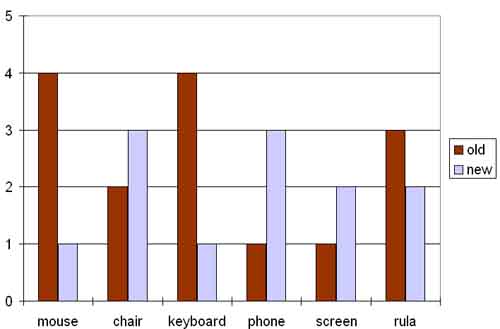
Cornell University Ergonomics Web

Cornell University Ergonomics Web
Ergonomic Intervention &
Follow-up Study
of the
City of Ithaca
Department of Planning and Development
| Introduction | Workstations | Results | Discussion |
Workstation 11 (previously
15b)
| Workstation design | Changes: Installed articulating keyboard and mouse tray Decreased monitor height Decreased desk height |
||
| Injury |
Discomfort eliminated in: Potential: |
||
| Posture |
Observations |
||
| Comments |
Although this employee switched workstations during the study, the workstations were similar and the recommendations for the first workstation were applied to the current workstation. Mouse use is the main task of this employee, and the articulating keyboard and mouse tray produced an immediate improvement in wrist posture, especially during mouse use. Discomfort in the neck and back was also eliminated by decreasing the height of the desk and monitor. The employee's legs are supported with the feet firmly on the floor. The overall changes in the arrangement of the workstation allow the employee to lean back in the chair and fully support their back and neck. The employee is very satisfied with the changes in the workstation and should attempt to make similar changes to her workstation at home, which was identified as the cause of some current discomfort. |
||
| Data |

|
||
| Before/After |
|
Next: Workstation 12